GrabCAD

Spheres of Time
by GrabCAD
Last crawled date: 1 year, 11 months ago
Puzzle balls have been made by master craftsmen for hundreds of years and are known as symbols of good luck. Each ball contains a number of layers which can take days, weeks or months to carve out of a single piece of material, with any mistake risking the loss of the entire piece. The ‘puzzle’ in the name refers to the mystery in how such an object could be made. Crafts such as these are perfect candidates to be 3D printed as it means they can be printed in hours, rather than days or weeks, and designs can be easily altered and reprinted for as many people as want to enjoy them. The mystery of how someone could carve them becomes instead a marvel at modern technology and the wonder that is 3D printing.
True to the original spirit of puzzle balls, this ‘Spheres of Time’ piece has been designed to be interactive with 5 layers and the whole of human history to discover within. Each layer represents a period of human technological advancement, radiating outwards from the earliest prehistory to the modern information age. At the centre of the sphere sits the core which is responsible for all of our technology and discoveries - the brain. The intent of this piece is to sit on your desk and act as something to play with, and draw inspiration from, whilst thinking about your own work and problems to be solved. It is incredibly satisfying to align all of the spheres and taking the time to explore the different layers gives a much needed break and allows for an appreciation of how far we have come as a species, and how far we still have to go. How many more layers will be added to this design in the future?
‘Spheres of Time’ is intended to be a celebration of human ingenuity. Each layer has been divided into 6 sections, 2 of which act as viewing ports to easily see the layers below and 4 of which are cut-outs representing key technologies or concepts developed in that time period. I’ve detailed my choices for the technologies I included below. The model has been designed according to the specifications and printing tolerances detailed on i.materialise, which has also provided the model check and quote for printing. The outer diameter is 100 mm. As the spheres are printed inside each other, and are sized so that they cannot fall out, a 3D printing method which has support material is required. The most appropriate printing method for this piece is to be selective laser sintered (SLS) out of a material such as Polyamide as the unfused powder will provide the required support.
I am James Parker, a graduate student studying thermos-fluids in the engineering department at the University of Oxford.
It was difficult to choose the 4 characteristic technologies and discoveries for each layer of the sphere and at some point I would like to return to this project and add more layers and designs. The current design starts with the inner-most layer representing prehistory and our first steps towards the world we live in today with the 4 sides depicting fire, stone tools, the wheel and language. Moving outwards to the second layer moves forward to ancient history and classical times. Language advanced from verbal communication to written records and the alphabet. Mathematics began to give us a deeper understanding of the world as well as allowing for trade and commerce. Metalworking and smelting of alloys such as bronze opened up a huge new range of tools and technology. Sail boats allowed exploration and trade of ideas and goods between distant civilizations. The middle ages are here characterised by a few key technologies which represent larger overall advancements during the period. The hourglass was essential for keeping time at sea and timekeeping tools such as mechanical clocks were also developed during this period. The printing press allowed for easy dissemination of information - no longer did books have to be copied by hand. Advanced navigation techniques, such as the sextant and astrolabe allowed ships to safely voyage beyond sight of land and opened up the world to exploration. Key agricultural methods such as the wide adoption of wind and water mills, and the development of the heavy plough allowed more food to be easily produced. More food in less time allows for more people and more creative thinking.
Skipping forward once more brings us to the modern age. The development of flight and telecommunications made the world feel like a much smaller place, with travel, trade and communication easier than ever before. Electricity propelled us into a new age with endless possibilities - which we are still exploring today. Gas turbines and other engines power the entire world and made everything from travel to manufacture far easier. Finally the outer layer represents today, the information age. Never before have we been so connected over such distances thanks to computers and the internet. Computers are the tool which makes the other entries on this layer possible as they have allowed us to advance ever more rapidly with greater and greater technological achievements. A naturally progression from the data-crunching computers we are all familiar with is artificial intelligence and robotics. Whilst A.I is still in its infancy, with products such as Siri and Cortana, automated robotic assembly lines are widely used and hugely important for the mass-production. As our energy requirements continue to increase our ability to harness new forms of cleaner and renewable energy sources has improved. It is an exciting time for rocketry and space. It is a testament to how far we have come that from fire we have developed machines capable of taking us to the Moon and, in time, other planets.
True to the original spirit of puzzle balls, this ‘Spheres of Time’ piece has been designed to be interactive with 5 layers and the whole of human history to discover within. Each layer represents a period of human technological advancement, radiating outwards from the earliest prehistory to the modern information age. At the centre of the sphere sits the core which is responsible for all of our technology and discoveries - the brain. The intent of this piece is to sit on your desk and act as something to play with, and draw inspiration from, whilst thinking about your own work and problems to be solved. It is incredibly satisfying to align all of the spheres and taking the time to explore the different layers gives a much needed break and allows for an appreciation of how far we have come as a species, and how far we still have to go. How many more layers will be added to this design in the future?
‘Spheres of Time’ is intended to be a celebration of human ingenuity. Each layer has been divided into 6 sections, 2 of which act as viewing ports to easily see the layers below and 4 of which are cut-outs representing key technologies or concepts developed in that time period. I’ve detailed my choices for the technologies I included below. The model has been designed according to the specifications and printing tolerances detailed on i.materialise, which has also provided the model check and quote for printing. The outer diameter is 100 mm. As the spheres are printed inside each other, and are sized so that they cannot fall out, a 3D printing method which has support material is required. The most appropriate printing method for this piece is to be selective laser sintered (SLS) out of a material such as Polyamide as the unfused powder will provide the required support.
I am James Parker, a graduate student studying thermos-fluids in the engineering department at the University of Oxford.
It was difficult to choose the 4 characteristic technologies and discoveries for each layer of the sphere and at some point I would like to return to this project and add more layers and designs. The current design starts with the inner-most layer representing prehistory and our first steps towards the world we live in today with the 4 sides depicting fire, stone tools, the wheel and language. Moving outwards to the second layer moves forward to ancient history and classical times. Language advanced from verbal communication to written records and the alphabet. Mathematics began to give us a deeper understanding of the world as well as allowing for trade and commerce. Metalworking and smelting of alloys such as bronze opened up a huge new range of tools and technology. Sail boats allowed exploration and trade of ideas and goods between distant civilizations. The middle ages are here characterised by a few key technologies which represent larger overall advancements during the period. The hourglass was essential for keeping time at sea and timekeeping tools such as mechanical clocks were also developed during this period. The printing press allowed for easy dissemination of information - no longer did books have to be copied by hand. Advanced navigation techniques, such as the sextant and astrolabe allowed ships to safely voyage beyond sight of land and opened up the world to exploration. Key agricultural methods such as the wide adoption of wind and water mills, and the development of the heavy plough allowed more food to be easily produced. More food in less time allows for more people and more creative thinking.
Skipping forward once more brings us to the modern age. The development of flight and telecommunications made the world feel like a much smaller place, with travel, trade and communication easier than ever before. Electricity propelled us into a new age with endless possibilities - which we are still exploring today. Gas turbines and other engines power the entire world and made everything from travel to manufacture far easier. Finally the outer layer represents today, the information age. Never before have we been so connected over such distances thanks to computers and the internet. Computers are the tool which makes the other entries on this layer possible as they have allowed us to advance ever more rapidly with greater and greater technological achievements. A naturally progression from the data-crunching computers we are all familiar with is artificial intelligence and robotics. Whilst A.I is still in its infancy, with products such as Siri and Cortana, automated robotic assembly lines are widely used and hugely important for the mass-production. As our energy requirements continue to increase our ability to harness new forms of cleaner and renewable energy sources has improved. It is an exciting time for rocketry and space. It is a testament to how far we have come that from fire we have developed machines capable of taking us to the Moon and, in time, other planets.
Similar models
thingiverse
free

3-D Puzzle P3T5 2015-2016 by Thelzor
...use a series of changes that would effect how each piece interacted, causing us to need to edit each individual piece many times.
thingiverse
free

Sphere Puzzle
...oaded a modified version of the second part.
(3dpuzzle_sphere_gap_prt1_mod.stl)
it has a larger hole to make the assembly easier.
grabcad
free

Cube plane puzzle
... known to be used for prototypes, the high resolution and smooth surfaces would allow the puzzle pieces to move without clicking.
thingiverse
free
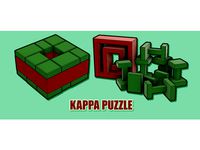
Kappa Puzzle by CoffeeOutlaw
...out supports
the stl files have instructions for how many of each piece to print, snap pieces together as shown in the rendering.
thingiverse
free

Puzzle Sphere by Ebro002
...s a dimple to put it in so there will not be any dimple on dimple action.
as far as i know there are 3 different ways to solve it
cg_trader
$3

Wooden puzzle for children | 3D
...wooden puzzle for children | 3d
cg trader
puzzle that allows children to have fun and develop their intelligence at this time.
thingiverse
free

Truncated Rhombic Dodecahedron Puzzle by RyanPuzzle
...ecause of this unique trait, the puzzle takes on the solving difficulty of a 2x2x3 that has been bandaged along the middle layer.
thingiverse
free

Pinhole Camera Click-Counter by GrahamDYoung
...mm film will click each time a sprocket hole goes by so you can count the clicks to determine how far the film has been advanced.
thingiverse
free

Snap Together Puzzle Three by pmoews
...zle composed of two copies of three types of pieces. openscad code is included and contains hints to the solution of the puzzle.
thingiverse
free

2x2 Sphere Extensions by He_Who_Cubes
...orner pieces).
these are untested models, and have not yet been printed. the final puzzle will be ~3.45 in (8.86 cm) in diameter.
Spheres
3ddd
$1
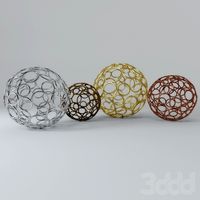
sphere
...sphere
3ddd
sphere for interior
archibase_planet
free

Spheres
...spheres
archibase planet
balls spheres
spheres - 3d model (*.gsm+*.3ds) for interior 3d visualization.
archibase_planet
free

Sphere
...sphere
archibase planet
globe sphere
sphere n151009 - 3d model (*.gsm+*.3ds) for interior 3d visualization.
3d_export
$5

sphere
...sphere
3dexport
sfgsrybsrtfsz
turbosquid
$1

Sphere
...
turbosquid
royalty free 3d model sphere for download as max on turbosquid: 3d models for games, architecture, videos. (1235365)
3d_export
$5
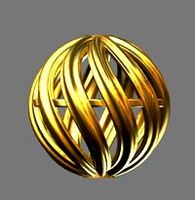
pendant sphere
...pendant sphere
3dexport
pendant sphere
3d_export
$5

pendant sphere
...pendant sphere
3dexport
pendant sphere
3d_export
$5
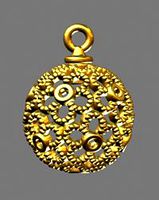
pendant sphere
...pendant sphere
3dexport
pendant sphere
3d_export
$5
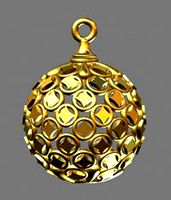
pendant sphere
...pendant sphere
3dexport
pendant sphere
3d_export
$5
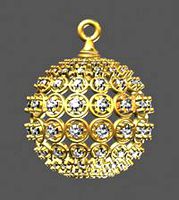
pendant sphere
...pendant sphere
3dexport
pendant sphere
Time
3d_export
$9
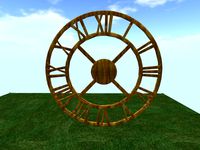
time
...time
3dexport
time
3ddd
$1

Комод time
...комод time
3ddd
stilema , time
комод от итальянского производителя stilema. модель time.
design_connected
free

Time Hourglasses
...time hourglasses
designconnected
free 3d model of time hourglasses by hay
design_connected
$9

Time Flies
...time flies
designconnected
jenny walsh design time flies computer generated 3d model.
design_connected
$13

Space-time
...space-time
designconnected
zero space-time computer generated 3d model. designed by rashid, karim.
3ddd
free
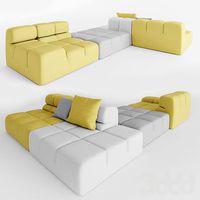
TUFTY-TIME
...tufty-time
3ddd
b&b italia , модульный
tufty-time from b&b;
3ddd
$1

Time Sofa
... time , arbel
om website: beltafrajumar.com
designer: arbel
formats: 3ds, c4d, fbx, obj
3ddd
$1

Modern Times 9185P
...modern times 9185p
3ddd
modern times
modern times 9185p
3ddd
$1
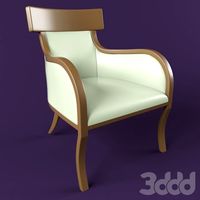
Modern Times 0402P
...modern times 0402p
3ddd
modern times
modern times 0402p
3ddd
$1

Modern Times 9446P
...modern times 9446p
3ddd
modern times
modern times 9446p
